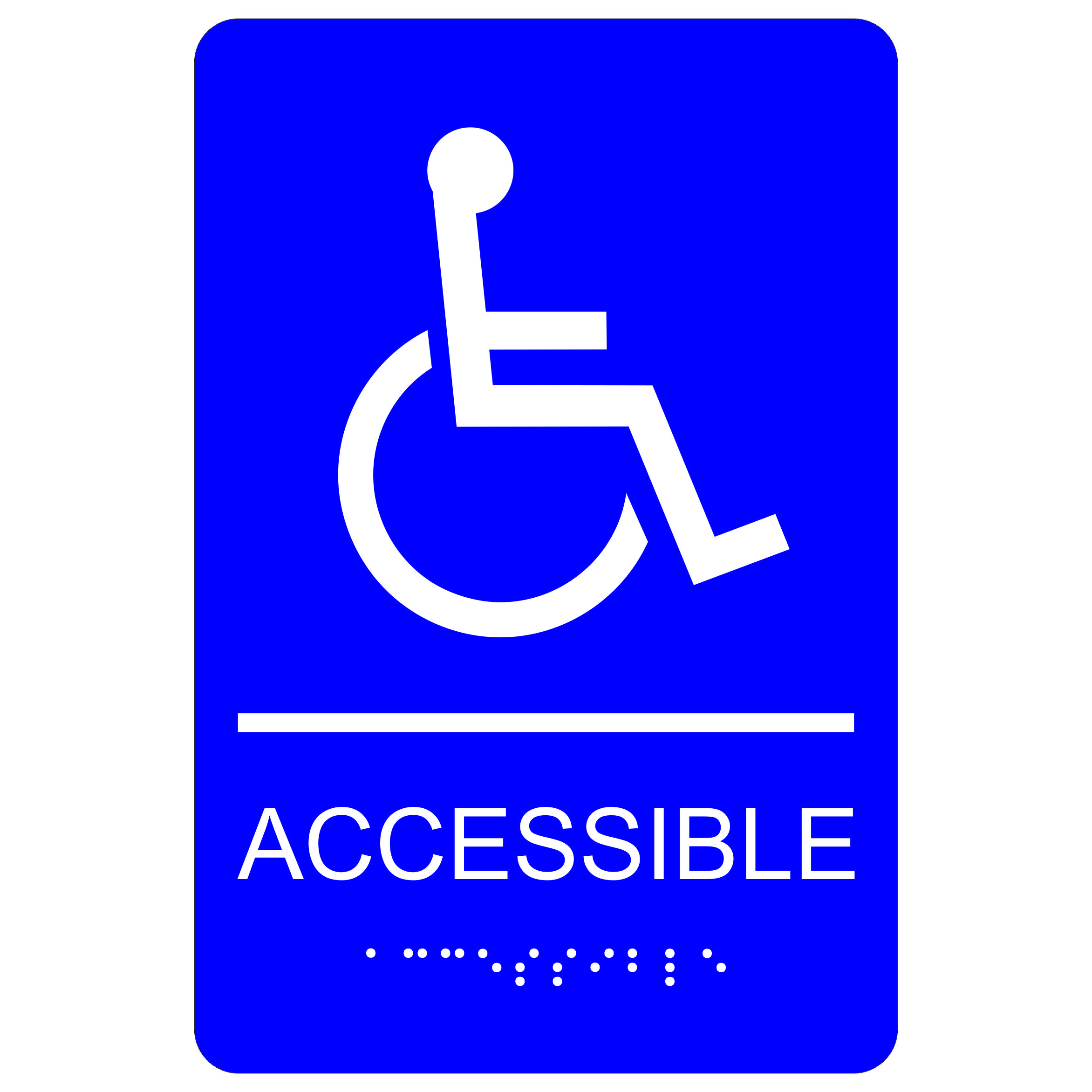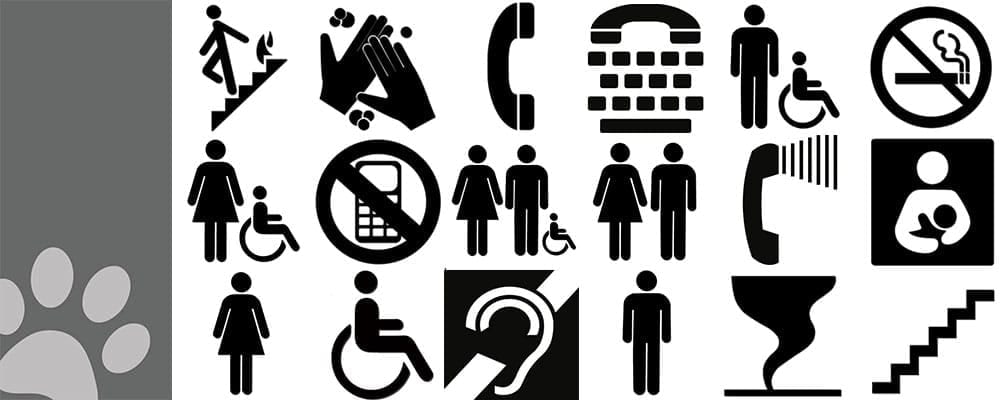Customizing ADA Signs to Satisfy Your Particular Demands
Customizing ADA Signs to Satisfy Your Particular Demands
Blog Article
Checking Out the Secret Functions of ADA Indicators for Enhanced Accessibility
In the realm of access, ADA indications offer as silent yet powerful allies, ensuring that areas are comprehensive and navigable for individuals with handicaps. By integrating Braille and tactile aspects, these signs damage obstacles for the visually impaired, while high-contrast color systems and clear typefaces cater to diverse aesthetic demands.
Value of ADA Compliance
Making sure conformity with the Americans with Disabilities Act (ADA) is critical for cultivating inclusivity and equal gain access to in public rooms and work environments. The ADA, passed in 1990, mandates that all public facilities, employers, and transportation solutions accommodate people with impairments, ensuring they delight in the exact same civil liberties and opportunities as others. Compliance with ADA requirements not just meets legal commitments yet additionally enhances an organization's track record by showing its dedication to variety and inclusivity.
Among the key aspects of ADA compliance is the application of easily accessible signs. ADA indicators are designed to ensure that individuals with disabilities can quickly navigate through buildings and spaces. These signs must stick to specific guidelines concerning size, font, color contrast, and placement to guarantee exposure and readability for all. Appropriately implemented ADA signage aids remove obstacles that people with specials needs often encounter, thereby advertising their self-reliance and self-confidence (ADA Signs).
Furthermore, adhering to ADA laws can alleviate the threat of lawful consequences and potential penalties. Organizations that stop working to adhere to ADA standards might encounter charges or lawsuits, which can be both economically burdensome and destructive to their public photo. Thus, ADA compliance is integral to fostering a fair environment for everybody.
Braille and Tactile Elements
The unification of Braille and responsive aspects right into ADA signage symbolizes the concepts of ease of access and inclusivity. These attributes are vital for individuals that are blind or aesthetically impaired, allowing them to browse public spaces with higher independence and confidence. Braille, a tactile writing system, is crucial in offering composed details in a format that can be quickly regarded via touch. It is typically put under the corresponding text on signage to ensure that individuals can access the info without aesthetic help.
Responsive aspects prolong beyond Braille and include elevated characters and icons. These components are designed to be noticeable by touch, permitting people to determine space numbers, bathrooms, departures, and other crucial locations. The ADA establishes details standards concerning the size, spacing, and positioning of these tactile elements to optimize readability and make certain uniformity across different atmospheres.

High-Contrast Shade Plans
High-contrast shade schemes play a pivotal duty in boosting the presence and readability of ADA signage for people with visual impairments. These systems are vital as they optimize the difference in light reflectance in between text and history, making certain that indications are easily noticeable, also from a distance. The Americans with Disabilities Act (ADA) mandates using specific shade contrasts to accommodate those with minimal vision, making it a crucial element of compliance.
The effectiveness of high-contrast shades depends on their ability to attract attention in different lights conditions, consisting of dimly lit settings and areas with my explanation glow. Generally, dark message on a light history or light message on a dark background is used to accomplish optimum comparison. Black message on a white or yellow history provides a stark visual distinction that helps in fast recognition and understanding.
Legible Fonts and Text Size
When thinking about the style of ADA signage, the option of clear font styles and ideal message dimension can not be overstated. These components are vital for making certain that indicators come to people with aesthetic problems. The Americans with Disabilities Act (ADA) mandates that fonts should be sans-serif and not italic, oblique, script, extremely ornamental, or of unusual form. These demands assist guarantee that the text is easily readable from a range which the characters are appreciable to diverse audiences.
The size of the message likewise plays a crucial duty in accessibility. According to ADA standards, the minimum message elevation must be 5/8 inch, and it needs to boost proportionally with checking out distance. This is specifically crucial in public rooms where signage needs to be reviewed promptly and precisely. Consistency in message dimension adds to a cohesive aesthetic experience, aiding individuals in browsing atmospheres effectively.
In addition, spacing between lines and letters is essential to legibility. Appropriate spacing avoids personalities from appearing crowded, improving readability. By sticking to these requirements, developers can substantially boost availability, making certain that signage offers its designated objective for all individuals, despite their visual capacities.
Efficient Positioning Techniques
Strategic positioning of ADA signs is essential for taking full advantage of ease of access and making sure conformity with legal standards. Correctly located indicators guide individuals with handicaps efficiently, assisting in navigating in public rooms. Key considerations include height, visibility, and closeness. ADA guidelines specify that indicators need to be placed at an elevation in between 48 to 60 inches from the ground to guarantee they are within the line of view for both standing and seated people. This basic height range is crucial for inclusivity, allowing mobility device individuals and individuals of varying heights to accessibility details effortlessly.
In addition, indicators should be positioned adjacent to the review latch side of doors to allow easy recognition before entry. This placement helps people find rooms and rooms without obstruction. In situations where there is no door, signs need to be located on the closest surrounding wall surface. Uniformity in indication positioning throughout a center enhances predictability, lowering complication and enhancing overall customer experience.

Final Thought
ADA signs play a crucial duty in promoting availability by incorporating features that deal with the demands of individuals with impairments. Including Braille and responsive elements guarantees vital details comes to the visually damaged, while high-contrast shade systems and understandable sans-serif font styles enhance presence across different lights problems. Reliable placement techniques, such as ideal mounting heights and tactical places, better promote navigating. These elements collectively promote an inclusive atmosphere, highlighting the value of ADA compliance in making sure equivalent gain access to for all.
In the world of availability, ADA indications serve as silent yet effective allies, making sure that areas are inclusive and accessible for people with handicaps. The ADA, established in 1990, mandates that all public centers, companies, and transportation solutions suit individuals with disabilities, guaranteeing they delight in the same legal rights and opportunities as others. ADA Signs. ADA indicators are made to make sure that people with specials needs can easily browse with buildings and rooms. ADA guidelines specify that signs need to be installed at a height in between 48 to 60 inches from the ground to guarantee they are within the line of sight for both standing and seated individuals.ADA signs play a vital function in promoting ease of access by incorporating features that deal with the needs of individuals with handicaps
Report this page